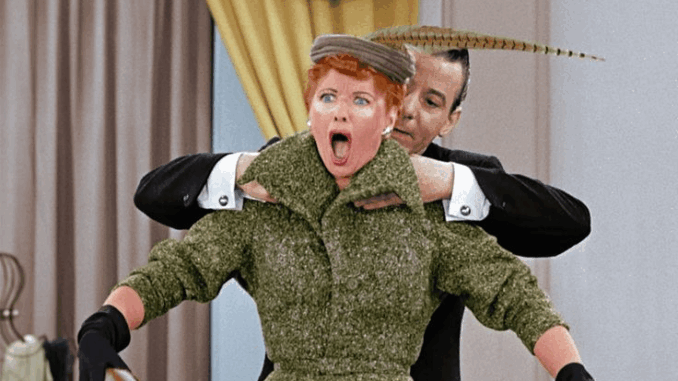
When I Love Lucy first aired on October 15, 1951, it was more than just a new sitcom—it was a seismic event that forever altered the landscape of television. At the heart of this revolution were Lucille Ball and her husband, Desi Arnaz, whose vision not only brought about one of the most iconic shows in TV history but also introduced groundbreaking innovations that are still the standard in TV production today. This article explores how I Love Lucy shaped the television industry, paved the way for diverse representation, and left a legacy that continues to influence modern media.
A New Way of Filming: The Multi-Camera Setup and Live Audience
Before I Love Lucy, most television shows were filmed in a single-camera format, where scenes were shot in different locations with multiple takes. However, Ball and Arnaz had a different vision. They wanted the show to feel more like a theatrical production. The couple insisted on using a multi-camera setup, a technique that allowed several cameras to record the action at once, just like a live performance. This method not only made the show more dynamic but also reduced the amount of time needed for editing, leading to faster turnaround times for episodes.
Furthermore, the decision to film in front of a live studio audience added a new layer of energy and spontaneity. The laughter and applause from the audience became integral to the show’s comedic timing, which enhanced the viewing experience and brought a sense of community into the living rooms of viewers across the country.
Breaking Barriers: Lucy and Desi’s Cultural Impact
One of the most significant aspects of I Love Lucy was the inclusion of Desi Arnaz, a Cuban-American actor, as the male lead. At the time, it was virtually unheard of for a Latinx actor to play a leading role in an American television series, let alone have such a prominent role alongside a white American actress. This casting choice, although controversial in its time, helped to pave the way for greater representation of diverse ethnicities on television.
Additionally, Lucille Ball’s pregnancy was written into the show, breaking another television taboo. It was the first time in TV history that a woman’s real-life pregnancy was acknowledged and incorporated into a narrative. This storyline reflected a broader shift in how TV would eventually handle taboo topics, paving the way for more realistic portrayals of everyday life. Lucy’s pregnancy was even addressed in a way that broke down the barriers of what could be said on television; the term “pregnant” had to be approved by the network’s censors, which was a major cultural shift in itself.
The Legacy: Influencing TV and Beyond
The success of I Love Lucy had a ripple effect across the television industry. The show’s insistence on using film instead of live television tape, a decision made by Ball and Arnaz, meant that reruns became possible. The ability to air repeats led to the concept of syndication, which is a critical revenue model in today’s television landscape.
More than just shaping production techniques, I Love Lucy revolutionized television as a cultural force. The show reached millions of viewers weekly, making it an essential part of American pop culture. It laid the foundation for what we recognize today as the “family sitcom,” a genre that would flourish in the decades to follow with shows like The Brady Bunch and Full House.
In many ways, I Love Lucy taught future TV creators what it means to connect with an audience. The relatability of the characters, especially the bumbling Lucy Ricardo, resonated with viewers who saw a little bit of themselves in her. Lucy’s constant struggle to achieve her dreams, despite her failures and misadventures, was a storyline that audiences could relate to on a deep level.
Conclusion
Lucille Ball and Desi Arnaz’s I Love Lucy was not just a television show—it was a cultural earthquake. From its revolutionary filming techniques to its breaking of cultural barriers, it fundamentally changed how TV shows were made and how they could shape society. I Love Lucy didn’t just entertain; it set new standards, challenged societal norms, and created a blueprint for television production and representation that still resonates in modern-day media.
As we look back at the legacy of I Love Lucy, it is clear that the show was not merely a product of its time, but a timeless work that continues to influence television and popular culture more than seven decades after it first aired. Lucille Ball’s brilliance, Desi Arnaz’s vision, and their ability to break barriers paved the way for future generations of TV creators. I Love Lucy will always remain a pivotal moment in television history, a cultural milestone that changed the way we watch and experience TV forever.
